A Tracking Tool for Lean Solid-Dose Manufacturing
Pharmaceutical companies are facing increased competition, cost pressures, and a need to improve the performance of their manufacturing operations. Lean manufacturing offers methods, tools, and heuristics for improved efficiency in manufacturing. Process analytical technology offers alternative analysis techniques that could greatly improve manufacturing quality and efficiency. Mathematical tools exist for assessing the efficiency of manufacturing processes. Internal benchmarking is recommended for determining the efficiency and tracking improvements in pharmaceutical manufacturing.
Imagine a solid-dose manufacturing plant that is operated using lean manufacturing principles. The plant makes a wet granulated, tableted prescription drug that has nearly $400 million in annual sales. Weighed ingredients are moved directly from the dispensing area to a small queue near the wet granulator. Because granulation is the slowest of the processing steps (i.e., the bottleneck), it is important that the granulator be kept operating at all scheduled run times. The operation is never starved of materials to granulate, so a queue of a few hours' worth of material is available.

Once granulated, the batch is immediately sent to a final blend stage, where excipients (such as magnesium stearate) are added and blended. The blended batch is then taken directly to the nearby compression area, where it is the next batch in line for tableting.
Several hours later, the tableted batch proceeds directly to the coating area where, again, it is next in line for processing. The coated product is then held for a positive release to packaging and for the first time, the product is moved to the warehouse for storage. About two shifts later, the product is released, and the batch is packaged the next day. The entire operation, from the weighing of active ingredients to the packaging of the final product, takes approximately 40 hours.
What are the advantages of such a fast operation? For one, it is cost efficient. Inventories are minimized, which improves cash flow. Because the overall cycle time is short, finished product inventories can be kept to a minimum. The plant is more responsive to changes in demand. Very high levels of product quality are required; the system cannot maintain a high level of efficiency unless product quality is built into the process.
Can lean manufacturing be adopted by the pharmaceutical industry? Forty-hour cycle times may not be achievable, but tremendous improvements are possible. Some companies have tried to apply the principles of lean manufacturing to specific operations with outstanding success. To achieve a lean operation, a company must understand both its processes and the science of manufacturing.
The need for manufacturing efficiency
Concern about inventories, cycle times, and manufacturing costs has been driven by economic need. Toyota Motor Corporation is generally credited with creating the concept of lean manufacturing. The Toyota production system was created as a kanban, or a just-in-time system, and evolved out of need. After the oil crisis of the early 1970s, the company simply did not have the resources to spend on excess inventory. Toyota's production system was developed to eliminate waste wherever it was found: raw material inventory, work in process, finished product inventories, off-quality materials, and scrap. As the system evolved, it began targeting wasted time as much as wasted materials (1).

Abbreviations used in this article
Historically, the pharmaceutical industry has not felt this need. The primary reason is that manufacturing has not been a focal point for the industry. Manufacturing has been considered a necessary evil (2), a cost center instead of a profit center (3), and often has been ignored by management. The most important task for the pharmaceutical industry has been to bring new products to market rapidly. Manufacturing has been viewed as an impediment to that mission (4). Manufacturing has essentially two charges: follow the protocols and do not make mistakes.
Pharmaceutical companies now are facing increased competition, cost pressures, and a need to improve the performance of their manufacturing operations (5). The US Food and Drug Administration has described pharmaceutical manufacturing as inefficient and costly, with low efficiency primarily caused by self-imposed constraints in the system (6). Some of the current problems regarding process cycle time have been well documented in FDA meetings about process analytical technology (PAT). An important technique of PAT involves replacing laboratory testing with online monitoring. This may include near-infrared spectroscopy to determine the drying endpoint during granulation or using focused beam reflectance measurement for particle size determination. Replacing laboratory testing with online monitoring methods can greatly improve process cycle time while improving process and product quality.
Pharmaceutical manufacturing lags behind other industries in process efficiencies. Original production processes for new drug products usually are developed in a laboratory for producing clinical trial material. Many tests are conducted to understand these early processes and to ensure product quality. The pressures are to create a product that delivers the active pharmaceutical ingredient and to develop a process quickly that can be submitted in a new drug application (NDA).
At this point in the research and development process, manufacturing efficiency is not a key consideration. The problem develops as the research-based manufacturing techniques are documented in the NDA. The NDA locks in the manufacturing steps with a regulatory commitment for the future manufacturing process before the process is optimized and most manufacturing input can be obtained. Tests that were initially performed for learning purposes become required quality control tests (6).
A "desired state" of pharmaceutical manufacturing includes improved knowledge of the products and processes, and decreased dependence on inspection and testing (6). The pharmaceutical industry is still dependent on product testing at every step in the process, but quality cannot be inspected into the product. In reality, product quality is dependent on the quality of the raw materials and the processes that transform those materials into a finished product. Finished-product quality is improved by understanding and monitoring the raw materials and the manufacturing processes. Rather than depend on inspection, the industry must create robust processes that produce consistent, high-quality goods. By monitoring and controlling those processes, higher quality levels are achieved that cannot be matched by a reliance on inspection. In the words of W. Edwards Deming, "Quality comes not from inspection, but from improvement of the process" (7). Continuously monitoring a known process can lead to better product quality without requiring laboratory testing interruptions (8).
"Factory Physics" (Factory Physics, Inc., Bryan, TX) is a systematic description of the underlying behavior of manufacturing systems (9). The tools allow the practitioner to identify opportunities for improving existing manufacturing systems and to design improved new systems. Internal benchmarking can be conducted to measure how well a manufacturing system is operating and to track progress effectively as improvements are made. For a given process, a lean manufacturing zone may be identified and the performance of improvement projects may be tracked.
PAT has been a focus area since 2001, when FDA's Advisory Committee for Pharmaceutical Science began discussions. Tremendous progress can result from PAT implementation. The greatest challenge to implementation is overcoming the mindset that every step of a manufacturing process must be tested using an offline chemical laboratory. Although the off-line testing approach makes sense in the research phase in which the processes were created, this approach makes little sense in daily manufacturing.
Rather, companies must create robust processes, understand them, and then monitor the processes themselves. Stable processes under statistical control will create repeatable sets of products with known variability—if companies understand their processes. The best way to control product quality is to control process quality.
The science of manufacturing
Work in process, throughput, and cycle time. The throughput of a process, the amount of inventory stored in the process, and the cycle time of the process are all linked. Work in process (WIP) is the inventory between the starting point and the end point of the process (10). Throughput (TH) is the average output of a production process per unit of time. Cycle time (CT) is the average time from the release of a batch at the beginning of the process until it reaches the end of the process. These variables are dependent on each other as defined in Little's Law (9, 11):
WIP = TH × CT [1]
The bottleneck rate (rb) is the rate of the workstation that limits the throughput of the process. Goldratt (12) has written about the profound effect of bottlenecks on manufacturing processes. Raw process time (T0) is the sum of the individual unit operation times. It does not include time that materials spend waiting for the next unit operation. The critical WIP (W0) is the inventory level of a perfect process, operating at the bottleneck rate and raw process time, and having no variability. This process is theoretically perfect (9):
W0 = rbT0 [2]
As is apparent by these simple relationships, WIP increases as either cycle time or throughput increases. The minimum theoretical cycle time is T0, and any time delays (such as waiting to begin the next unit operation) will increase the WIP. Because the pharmaceutical industry operates with long cycle times, the resulting work in process inventory is high.
Internal benchmarking. Factory Physics contains several principles, one of which is the Best-Case Performance Law (9). The minimum cycle time and the maximum throughput for a given WIP level (w) may be determined by:
CTbest = T0 (if w ≤ W0)
CTbest = w/T0 otherwise [3]
THbest = w/T0 (if w ≤ W0)
THbest = rb otherwise [4]
Despite slogan promises to the contrary, zero inventory is not a realistic goal. Rather, the critical WIP (W0) is a more reasonable ideal, although it is still a theoretical objective.
The worst-case performance for a given inventory level (w) is defined as follows (9):
CTworst = wT0 [5]
THworst = 1/T0 [6]
These equations represent the maximum cycle time and the smallest throughput possible for a process having a raw process time of T0. Although they represent an extreme limit, they help quantify the boundaries in which the process might operate.
No process will operate at either the best-case or the worst-case levels, but will operate somewhere in between. It also is helpful to have an idea of what might be considered "good." The following equations represent the practical worst case (9) or the marginal case (13):

Although the term "practical worst case" may sound extreme, the lines actually determine the division that distinguishes good performance from bad (hence, the term "marginal case"). Best-case, worst-case, and practical worst-case performances can be shown graphically. The relationship of work in process and cycle time is shown in Figure 1. The relationship between work in process and throughput is shown in Figure 2. In Figure 1, the space between the worst-case line and the practical worst-case line is considered the bad region. A factory should not operate in this area. The space between the practical worst-case line and the best-case line is the good region, and can be considered the area of lean manufacturing. In Figure 2, the area above the practical worst-case curve is considered good, or the lean region. Operation below the practical worst-case line is considered inefficient (13).
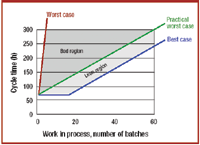
Figure 1: Cycle time versus work in process.
A solid-dose product. A reasonably typical solid-dose product is made in a hypothetical plant. The product is a wet granulated, tableted product that usually takes several weeks to make. The process flow chart is shown in Figure 3.
Weighing is performed in a highly manual system; its output can be increased by adding additional workers. Wet granulation includes high-shear mixing and a fluid-bed dryer. Because of the large amount of capital involved in this step, it is the design bottleneck of the process. The final blend process adds excipients needed for tableting and includes a mixing step. Compression is performed using low-capacity presses, but several presses are available to handle the required capacity. Although compression is not a design bottleneck, this step can create a bottleneck if problems occur. Coating is performed using a standard pan coater and a purchased coating mix. Packaging is performed on industry-standard blister- and bottle-packaging equipment. The time involved in each operation is identified in Figure 3. Although this process is reasonably typical, every product will have its own unique set of unit operations, cycle times, and throughputs.
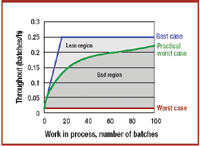
Figure 2: Throughput versus work in process.
Between each process step, samples are taken and sent to the quality control (QC) laboratory for analysis. After analysis, the results are reviewed by quality assurance specialists, and a pass is written for further processing if all requirements are met. Though the laboratory testing usually requires a few hours, two or more days are actually involved from the time the sample is taken until the pass is signed. It is estimated that only about 2% of a typical QC check time is spent actually testing the material (14).

Figure 3: Process flow chart for hypothetical solid-dose product.
Unplanned process downtime is minimized by ensuring that adequate inventory is kept ahead of all process steps. As a rule of thumb, 48 hours of released inventory is kept ahead of each unit operation.
A systems approach. Any manufacturing process can be thought of as a system. A system can be defined as a collection of things working together to produce something greater (15). Pharmaceutical manufacturing processes are collections of unit operations, working together to produce a product. When viewed as a system, US pharmaceutical manufacturing is inefficient. Asset usage is estimated to be only about 15% (16).
As discussed in FDA Science Board meetings, manufacturing cycle times are long, typically taking a month or more to make and release one batch. The production process is stopped several times to await the results of testing. A heavy emphasis is placed on trying to test quality, with the assumption that product quality must be proven through laboratory analysis. In one widely published example, a product that includes three days of actual processing had a batch cycle time of 35 days (16). In another example, an investigation of two products yielded an average cycle time of 95 days (17). These two cases are good examples of ranges that can be considered typical. It is widely known in the industry, but seldom discussed, that a large amount of time is spent waiting in queues for passes to move to the next stage of production. The waiting not only slows production times, but it greatly slows the responsiveness of the manufacturing organization to changes in demand. It also is expensive.
Very little rework is done in the pharmaceutical industry. If a problem is found with a batch, chances are very high that it will be scrapped. There is a sunk cost at the beginning of a production batch that includes the ingredient cost of all of the raw materials such as the active drug substance. The cost of materials usually is not recoverable in case of a process problem. The only at-risk cost of continuing to process a batch is the processing cost itself, which is primarily the cost of labor. Energy and materials cost (including packaging) are a distant second and third.
PAT offers great promise in improving pharmaceutical manufacturing efficiencies. PAT initiatives have received wide support in industry and from people within FDA. As with any initiative, it is helpful to have a method of identifying the current status and of tracking progress as changes are made.
Results
The current operation. It is not sufficient to say simply that current pharmaceutical manufacturing is inefficient. A method of gauging efficiency is needed. The internal benchmarking method can be used to quantify any process and to gauge the operation of the process against what it might become. The comparison is not with a process in another company, but rather, with its own potential.

Table I: Process results.
The internal benchmarking graphs shown in Figures 1 and 2 can be used to identify where any product falls relative to its own theoretical best. Table I shows the amount of time spent in various activities for the hypothetical solid-dose product. Process time indicates the amount of time that the product spends in the unit operation. QC indicates the time spent in the testing and approval mode. Inventory indicates the amount of time that materials are held as work in process inventory before proceeding on to the next operation. The amount of time in each step of the current example operation is shown under the "current" column.
The variables described earlier in this article, including TH, CT, and WIP may be calculated using equations 1–8 (see Table II).
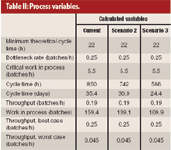
Table II: Process variables.
The throughput graph and the cycle time graph complete the picture. Figure 4 (Table II data) shows the throughput graph, with the current operation's results shown as point C. The process lies deep within the bad region; this is not a lean operation. Although the process is not approaching a worst case, it is far from the lean operating region. From a throughput perspective, the process is currently operating with too much work in process. Too much material is sitting idly in inventory, waiting for further processing.
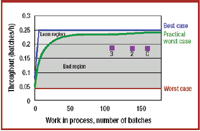
Figure 4: Throughput versus work in process.
The impact of work in process on cycle time is shown in Figure 5 (Table II data). The results for the current operation are shown as point C. As with the throughput graph, the operation is in the bad region, primarily because work in process inventories are so high. A decrease in work in process would improve cycle times by decreasing the amount of time that inventory sits idle.
Concurrent off-line testing. The graphs may also be used to identify progress. Work in process can be decreased by management edict, but if the system is not modified to accommodate the changes, other problems will result. These problems will usually manifest themselves in either an increase in cycle time or a decrease in throughput. The best way to decrease work in process is to improve the transition from one process step to another.
High quality is an absolute requirement of lean manufacturing. Without reliable in-process quality, production processes become bogged down in low-quality materials, and cannot run. For this reason, lean manufacturing is dependent on Six Sigma quality methods.
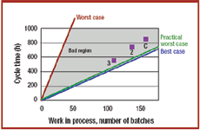
Figure 5: Cycle time versus work in process.
Following a systems approach, one can explore what happens when most of the off-line process testing does not stop the process. If companies understand their processes, then they should monitor and control those processes to achieve a quality product. Total quality management (TQM) teaches that controlling the process variability will create improved product quality, far better than will 100% inspection. As PAT implementation becomes more widespread, the added focus on process quality should lead to improved product quality. If companies eliminate the time delay of in-process quality checks from granulation through compression (but maintain all testing before and after packaging), then the cycle time and work in process levels improve. Process time following this scenario is shown in Tables I and II as Scenario 2. This scenario is also shown in Figures 4 and 5 as data point 2. It is clear that work in process and cycle time both decrease. Additional decreases in off-line testing time would decrease work in process further.
Inventory buffer decreases. If the in-process quality becomes high enough that processes are truly reliable, then they become predictable. As the process times become predictable, inventories between the process steps can be decreased. As a second step, if one decreases the inventory between the process steps, then cycle time and work in process will decrease further. Scenario 3 shows the effect of decreasing by half the inventory kept between dispensing and packaging. Process times and results are shown in Tables I and II, with Figures 4 and 5 showing the results as data point 3. Given that the initial inventories are quite large, the results are not as large a decrease as might be achievable. In a truly lean operation, there is less than one batch as buffer between the unit operations.
Savings. What is this worth? Inventory is saved. At a minimum, in-process inventory is reduced because high-value drug active is transformed from raw material to shippable product faster. For a product that has $400-million sales per year, a 30% improvement in work in process (the difference between the current operation and scenario 3) is noteworthy. Decreasing the cycle time from 35 to 24 days saves 11 days of inventory.
11 days × year/250 days × $400 million/year = $17.6 million in sales value
The weighted average net profit margin of the top five US pharmaceutical companies was 17.9% in 2005. On average, $17.6 million in sales is worth $3.1 million in profit. This amount is a one-time savings because of inventory reduction, but it represents real savings and real positive cash flow. In addition, costs associated with inventory such as the cost of capital, storage and handling costs, insurance, and property taxes would be saved. These costs have been estimated to be about 14% of the inventory value (18) or an additional $0.4 million in the hypothetical solid-dose product example.
Manufacturing responsiveness. In addition to pure savings, the improved cycle time would make the manufacturing system more responsive to changes in the market place. Events occur that change the demand for a product. These changes result in modified production plans, but there is always a lag time before the modifications appear in finished product inventory. This lag is the manufacturing cycle time.
An extreme example of responsiveness made national news in the fall of 2001 when anthrax was released in an act of bioterrorism. The situation created an emergency need for the antibiotic, Cipro. Production was increased (19), but the increased supply was not available for use until a few weeks later. A shorter production cycle time would have delivered the increased amount of product to the market much faster.
Conclusions
Internal benchmarking tools are useful in tracking progress toward lean pharmaceutical manufacturing. A reasonably typical product was used as an example and the tools were applied. The process was inefficient because of the large amount of work involved in traditional sampling, testing, and release activities. As modifications were made to the process, these changes were tracked and moved the results toward lean operation.
The tools are available for any sequential process and may be applied readily to pharmaceutical products for which more than one unit operation is used. As process analytical technology is deployed and off-line testing reduced, these tools can be used to track progress towards more efficient, lean operations.
Neal A. Lewis, PhD, is an associate professor in the College of Information Technology and Engineering (CITE) at Marshall University, 100 Angus E. Peyton Dr., South Charleston, WV 25303, tel. 304.746.2078, fax 304.746.2063, lewisn@marshall.edu
Submitted: April 14, 2006. Accepted: May 30, 2006. Keywords: lean manufacturing, manufacturing, process analytical technology, Six Sigma
References
1. T. Ohno, Toyota Production System (Productivity Press, Portland, OR, 1988).
2. S. Viswanathan, "Are You Moving Out?" Pharm. Formul. Qual. May 2004, www.pharmaquality.com/Cover%20Story6.htm, accessed Dec. 24, 2005.
3. V. Lander, "Cycle Time Reduction in Manufacturing Using a Scientific Data Management System," Chem. Today 22 (3–4), 14–16 (2004).
4. J. Woodcock, "FDA Regulation of Drug Quality: New Challenges," FDA Science Board, Rockville, MD, Nov. 16, 2001, http://www.fda.gov/ohrms/dockets/ac/01/transcripts/3799t1.doc, accessed March 13, 2006.
5. G. Gerecke and T. Knight, "Improving Performance and Reducing Cycle Time Using Flow Path Management: A Case Study," Pharm. Eng. 21 (6), 74–86 (2001).
6. US Food and Drug Administration, Innovation and Continuous Improvement in Pharmaceutical Manufacturing (Rockville, MD, 2004), http://www.fda.gov/cder/gmp/gmp2004/manufSciWP.pdf, accessed Mar. 21, 2006.
7. W.E. Deming, Quality, Productivity, and Competitive Position (Massachusetts Institute of Technology, Cambridge, MA, 1986).
8. N. Winskill and S. Hammond, "An Industry Perspective on the Potential for Emerging Process Analytical Technologies," FDA Science Board, Rockville, MD, Nov. 16, 2001, http://www.fda.gov/ohrms/dockets/ac/01/transcripts/3799t1.doc, accessed March 13, 2006.
9. W.J. Hopp and M.L. Spearman, Factory Physics (McGraw-Hill Irwin, Boston, MA, 2d ed., 2001).
10. R. Conway et al., "The Role of Work-in-Process Inventory in Serial Production Lines," Operations Res. 36 (2), 229–241 (1988).
11. J.D.C. Little, "Tautologies, Models and Theories: Can We Find 'Laws' of Manufacturing?" IIE Transactions 24 (3), 7–13 (1992).
12. E. M. Goldratt and J. Cox, The Goal (North River Press, Great Barrington, MA, 2d ed.,1992).
13. Factory Physics, "Absolute Benchmarking PLUS Value Stream Mapping," Factory Physics Forum, 2004, http://www.factoryphysics.net/factoryphysics/Documents/forum3.pdf, accessed July 3, 2005.
14. G.K. Raju, "Continuous Quality Verification," Advisory Committee for Pharmaceutical Science, Rockville, MD, July 19, 2001, http://www.fda.gov/ohrms/dockets/ac/01/transcripts/3763t1.htm, accessed June 22, 2005.
15. E. Rechtin, Systems Architecting (Prentice Hall, Upper Saddle River, NJ, 1991).
16. D. Dean and F. Bruttin, "Productivity and the Economics of Regulatory Compliance in Pharmaceutical Production," FDA Science Board, Rockville, MD, Nov. 16, 2001, www.fda.gov/ohrms/dockets/ac/01/transcripts/3799t1.htm, accessed June 22, 2005.
17. A.S. Hussain, "The ACPS's Process Analytical Technology Subcommittee," Advisory Committee for Pharmaceutical Science, Rockville, MD, Nov. 28, 2001, www.fda.gov/ohrms/dockets/ac/01/transcripts/3804t1.htm, accessed June 22, 2005.
18. E.F. Brigham and M.C.Ehrhardt, Financial Management (Harcourt, Inc., Fort Worth, TX, 10th ed., 2002).
19. H.H. Hovey, "Bayer Plans to Ship 200M Cipro Tablets Over Next 3 Months," Dow Jones Newswires, Oct. 17, 2001, http://interactive.wsj.com, accessed Oct. 27, 2001.

Drug Solutions Podcast: A Closer Look at mRNA in Oncology and Vaccines
April 30th 2024In this episode fo the Drug Solutions Podcast, etherna’s vice-president of Technology and Innovation, Stefaan De Koker, discusses the merits and challenges of using mRNA as the foundation for therapeutics in oncology as well as for vaccines.